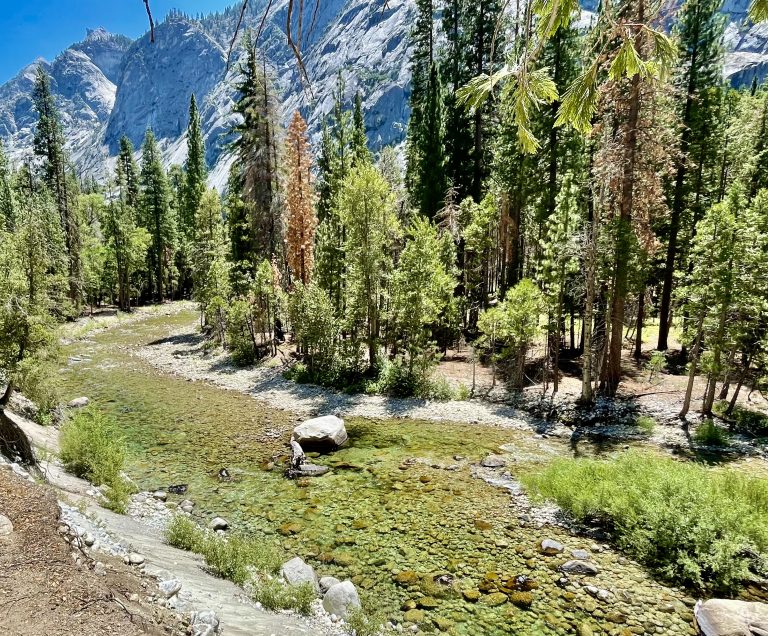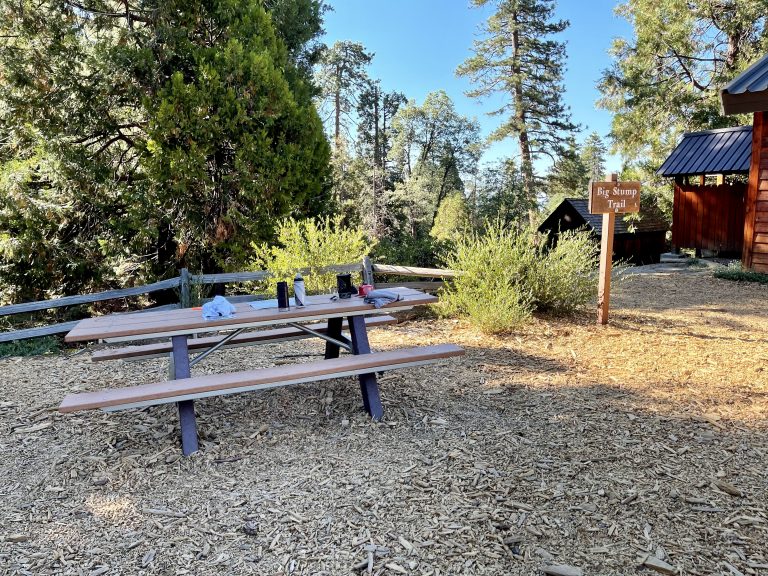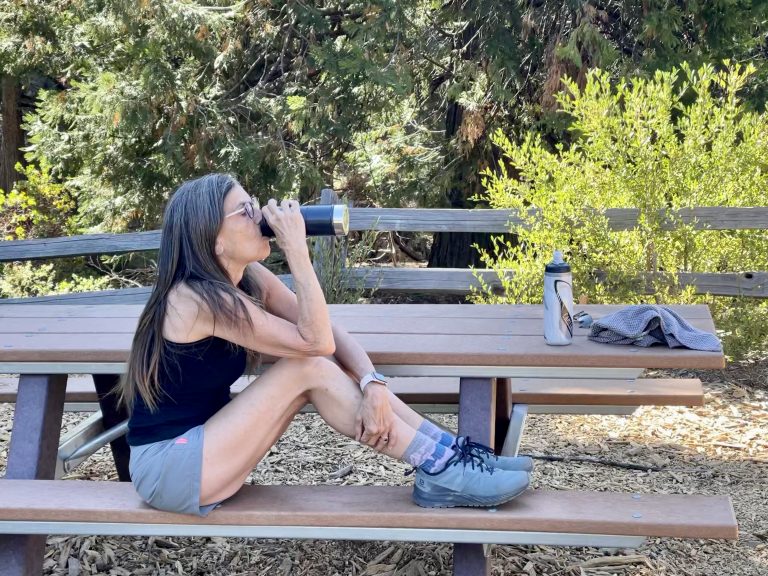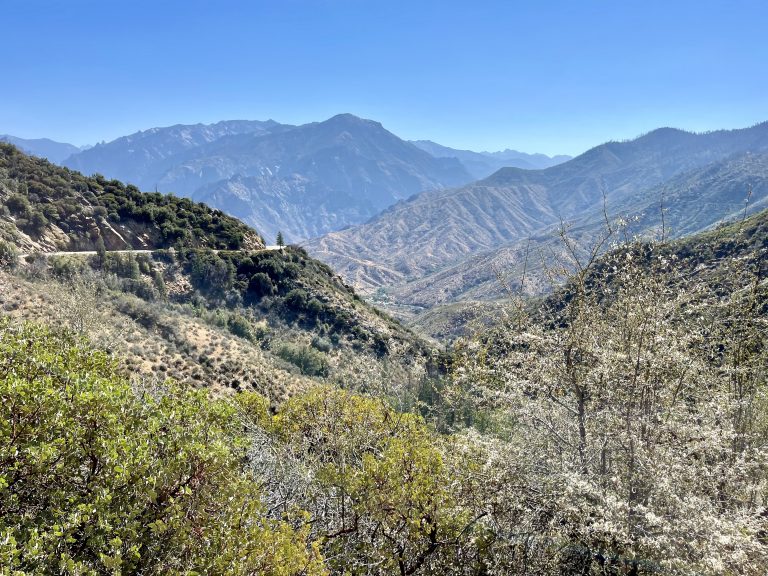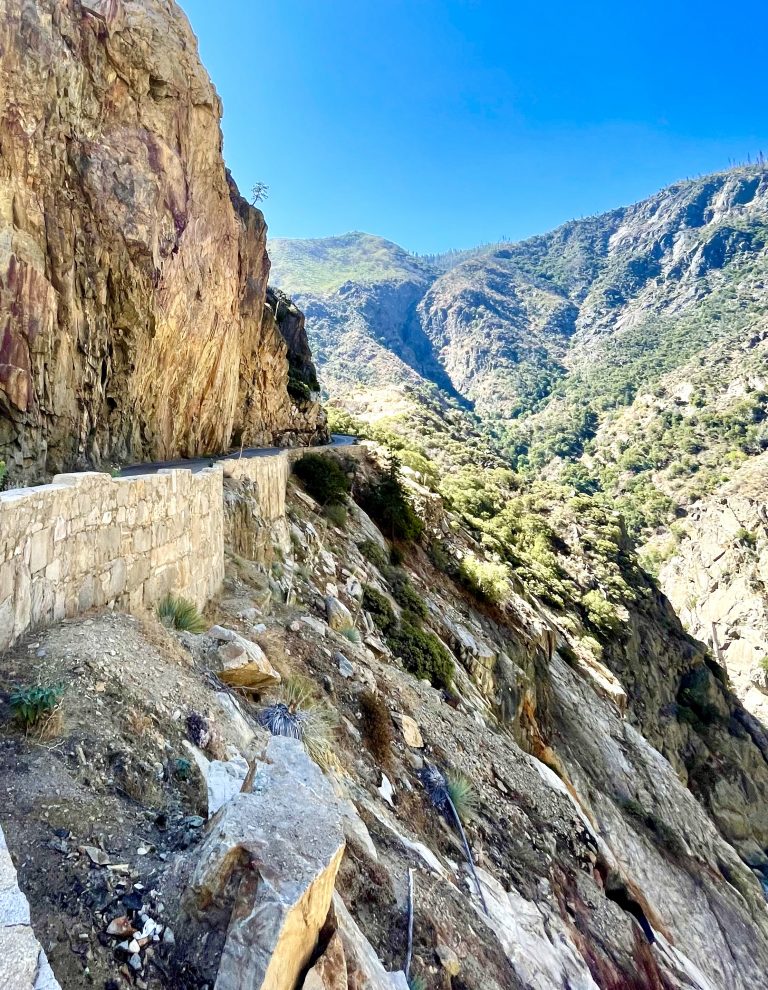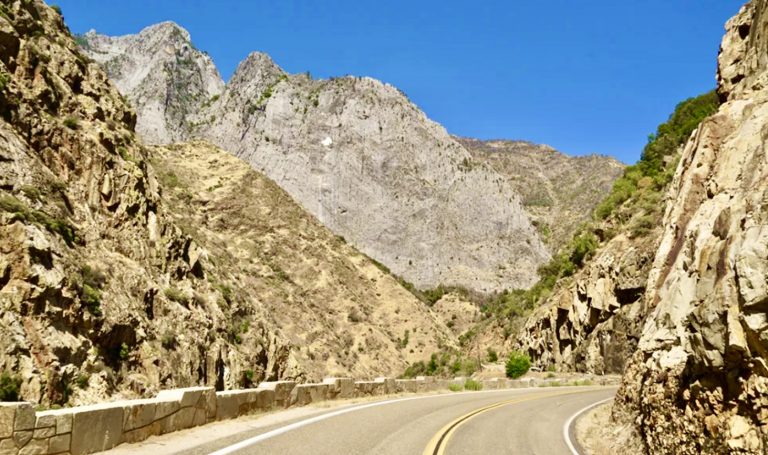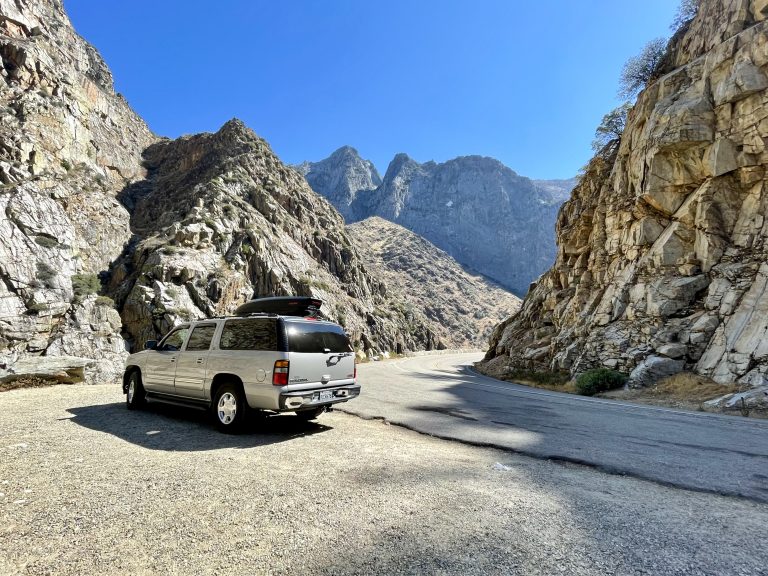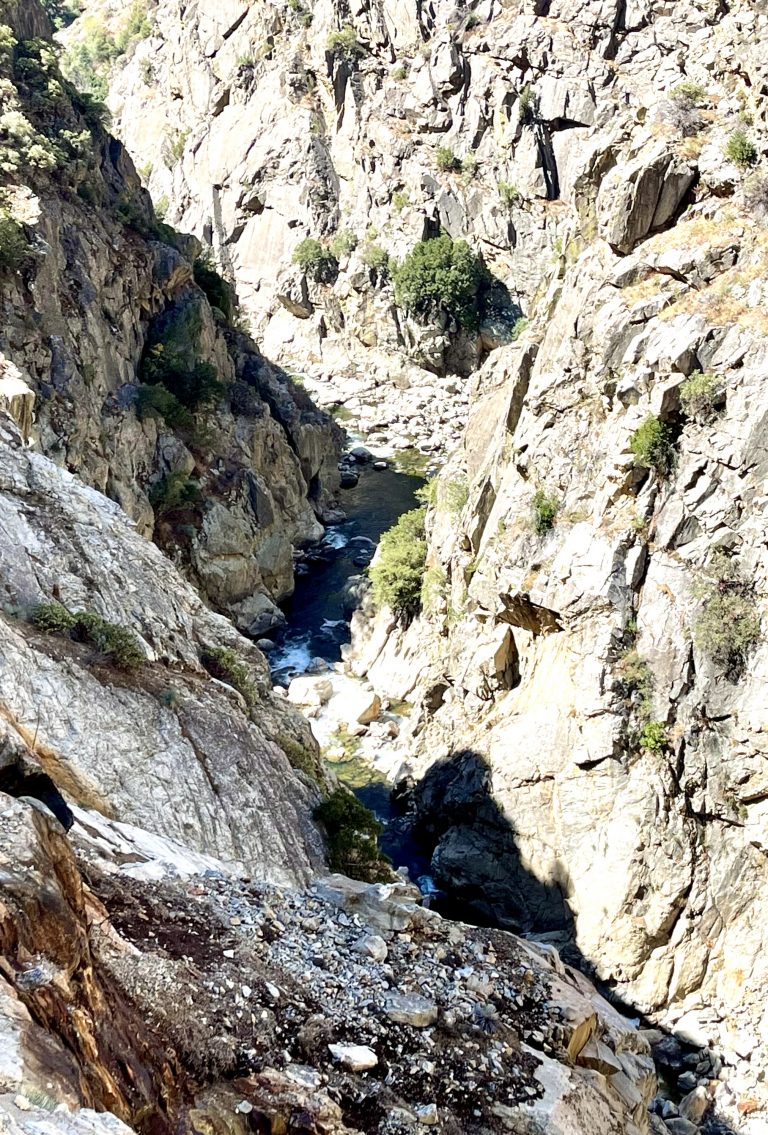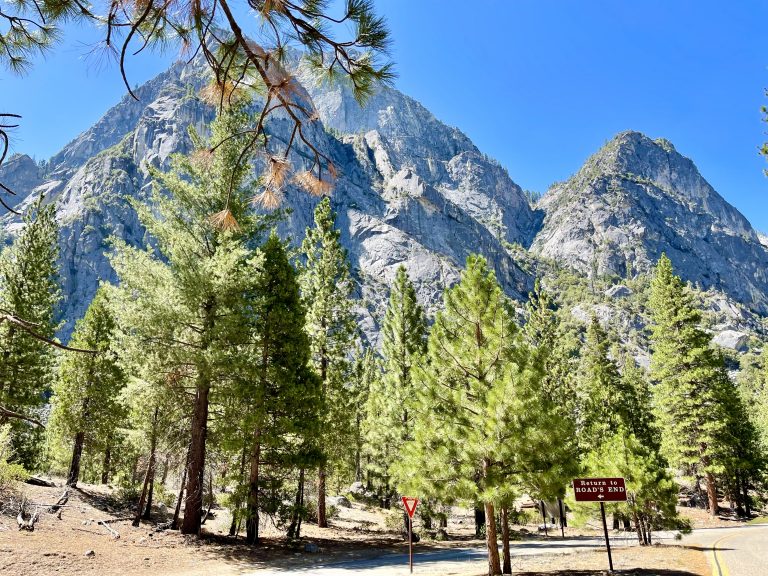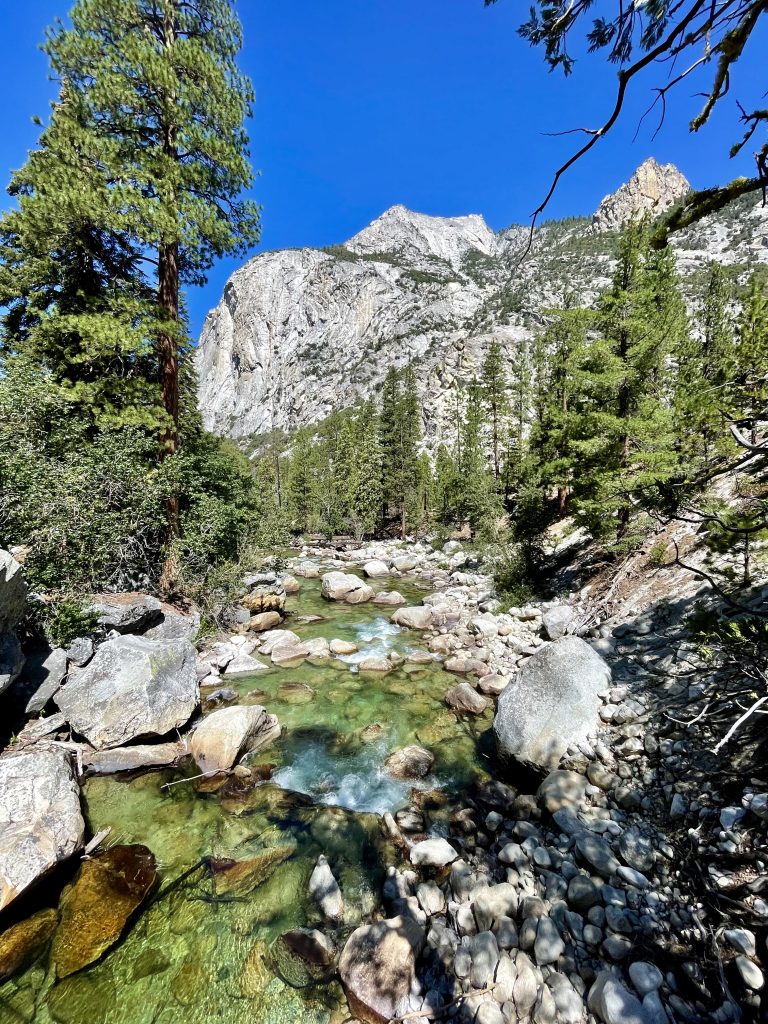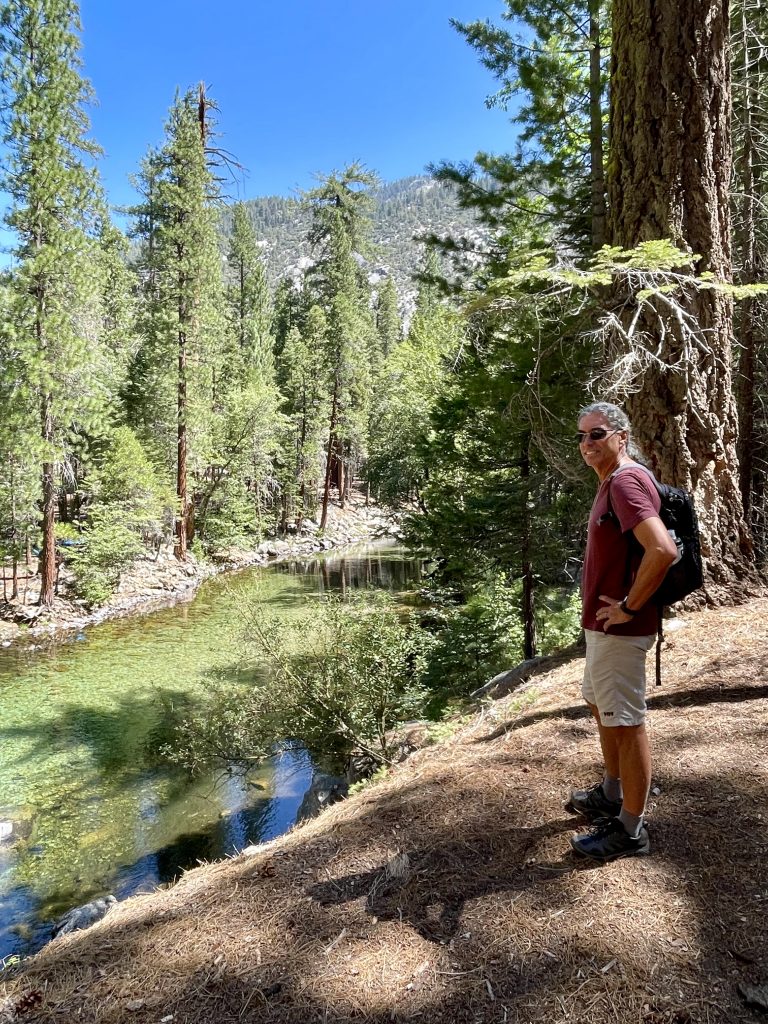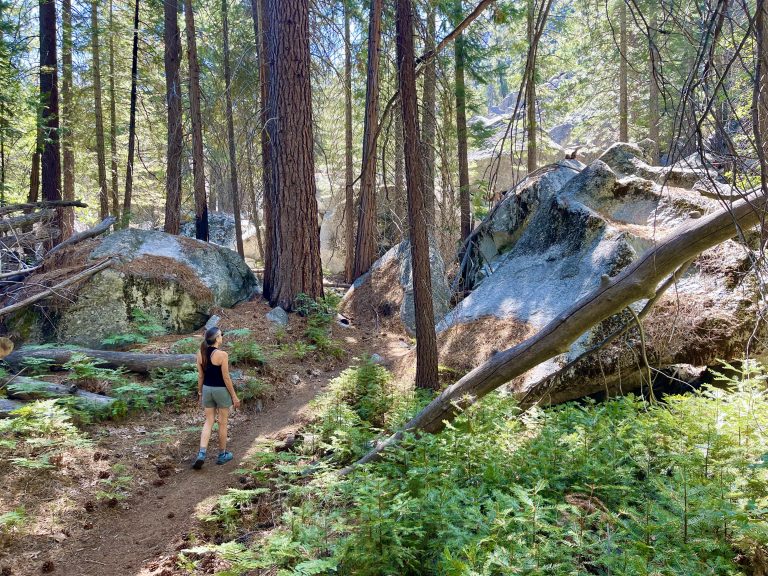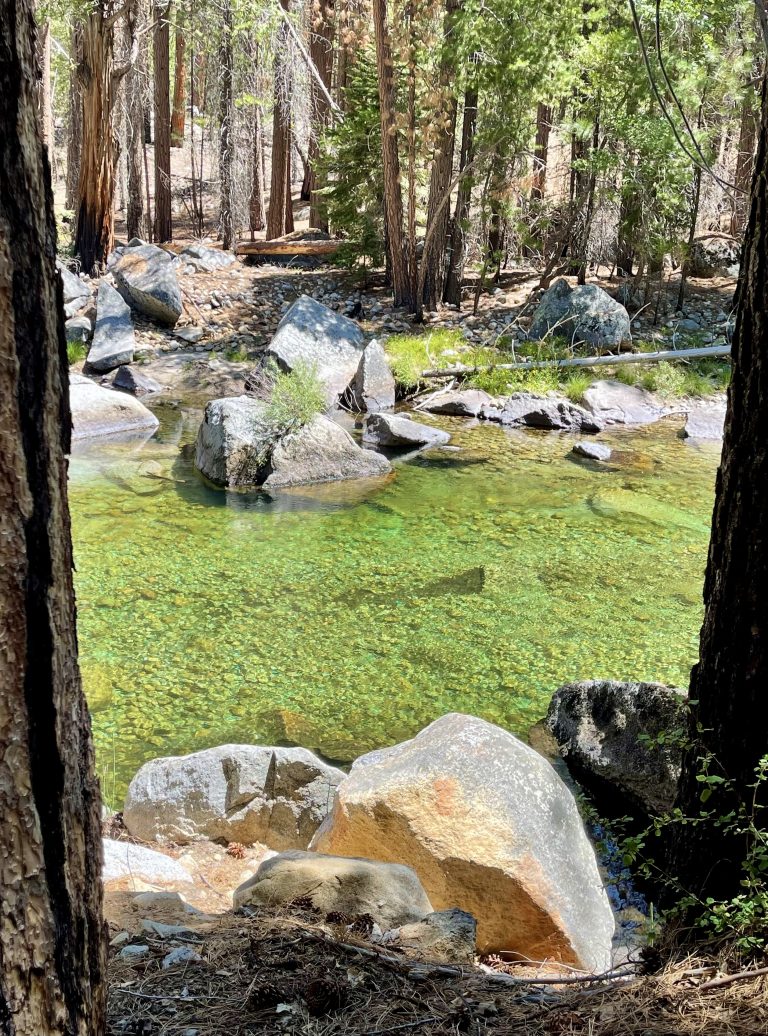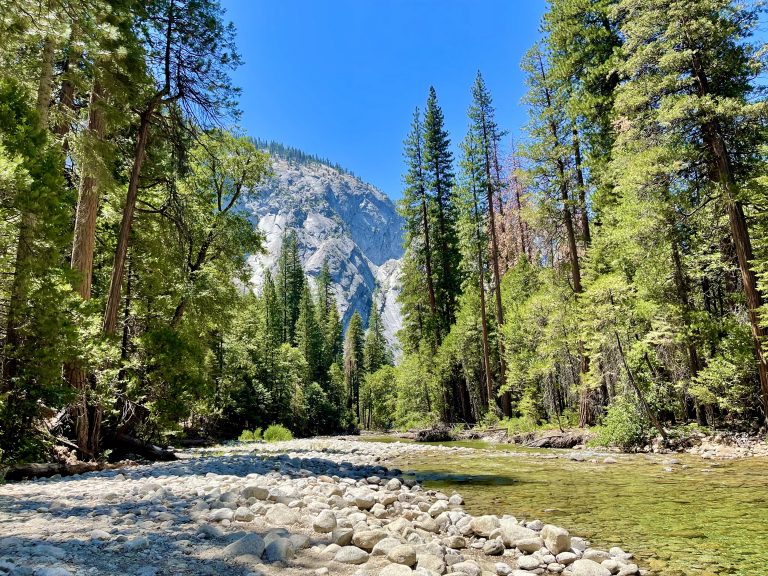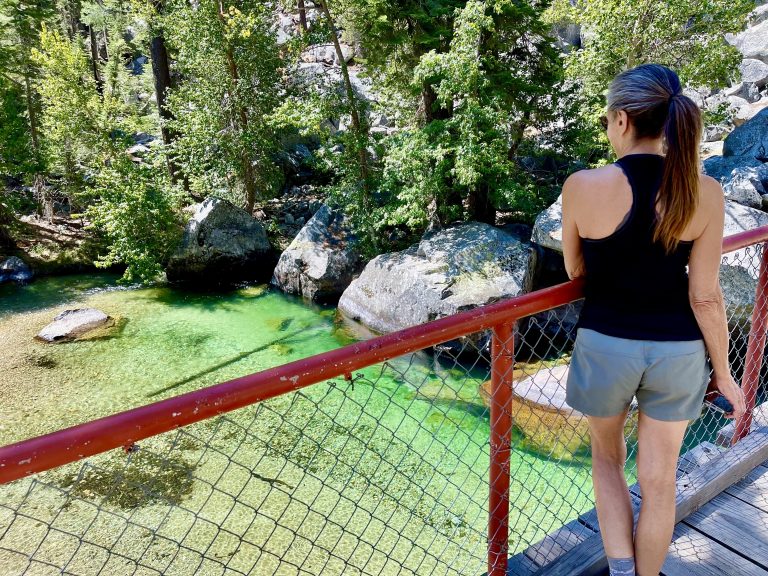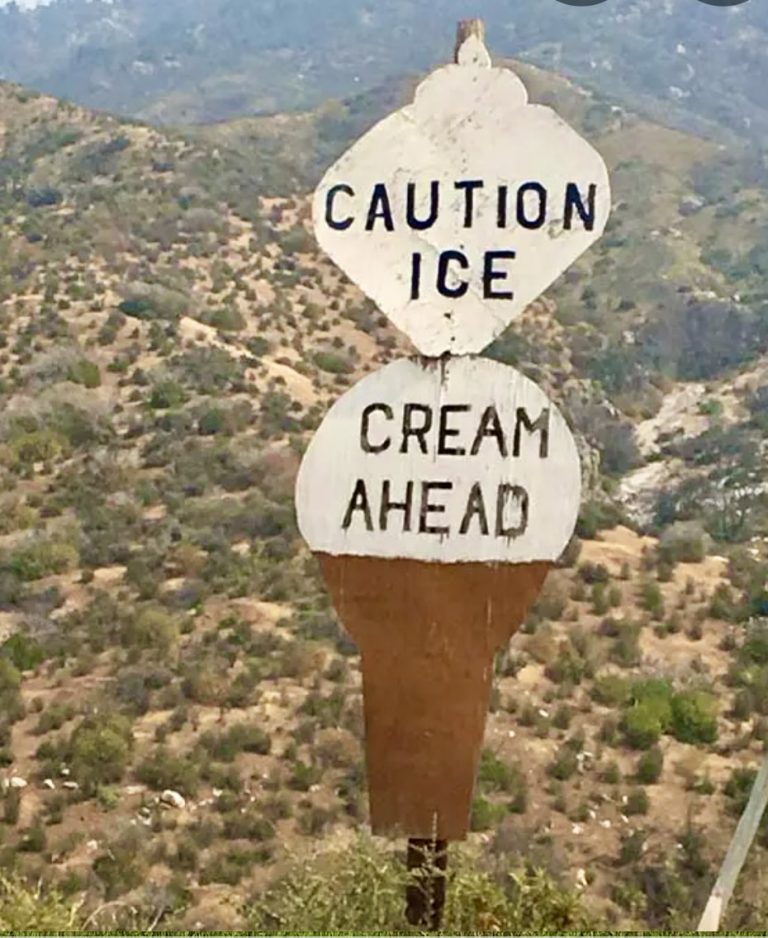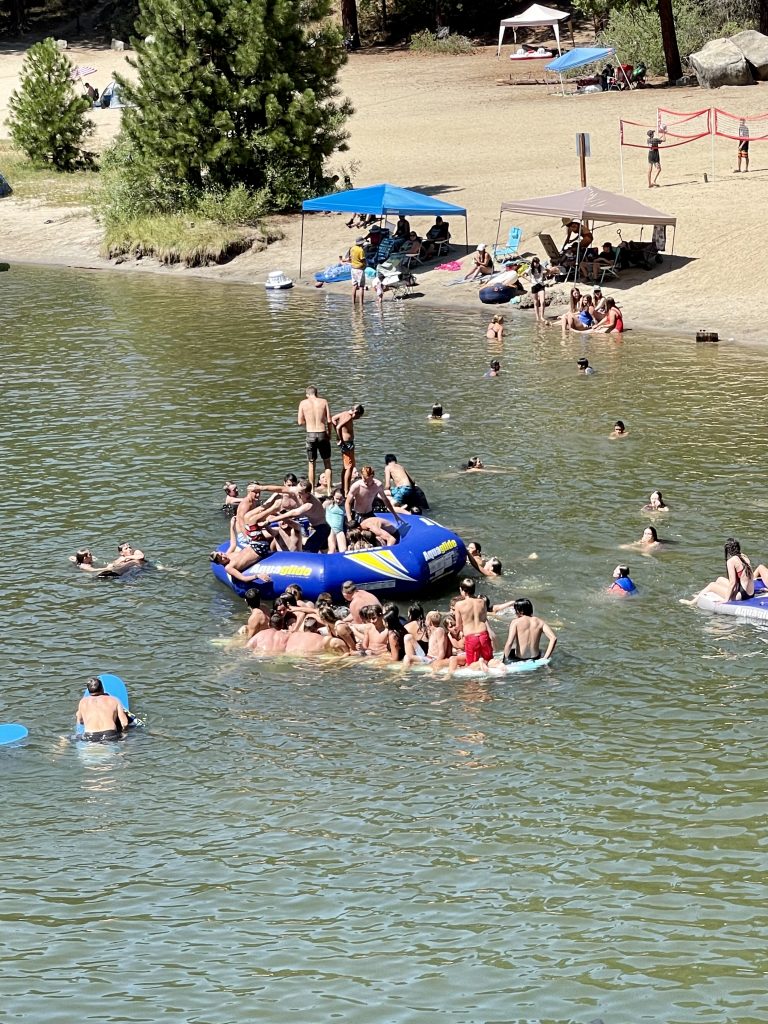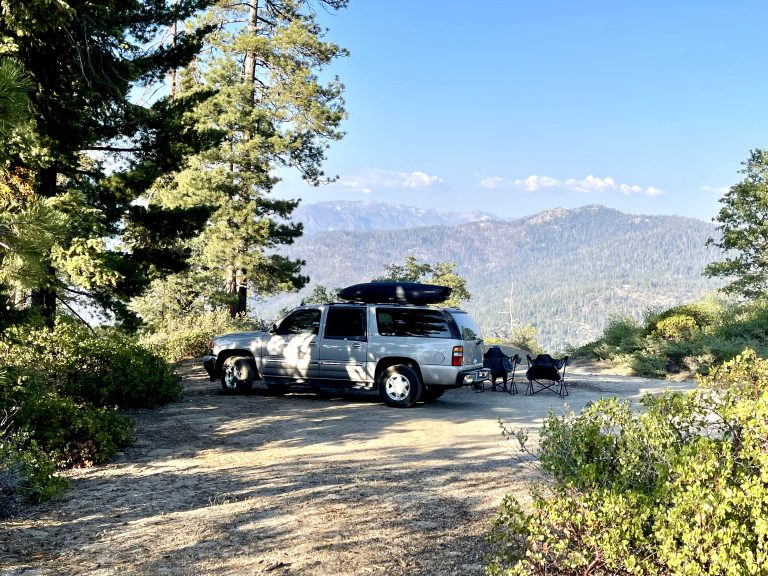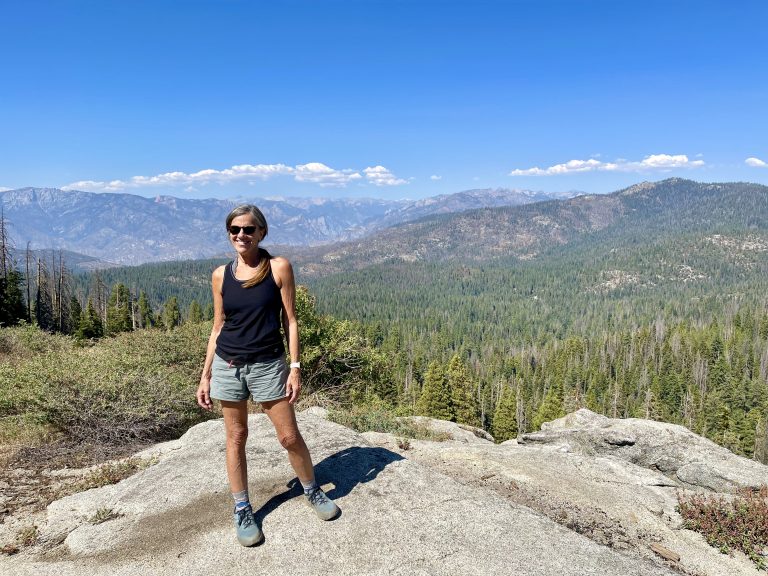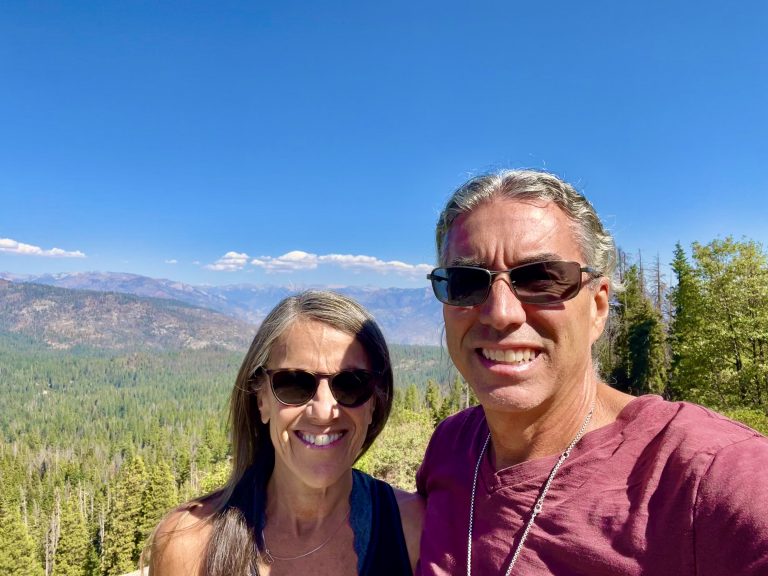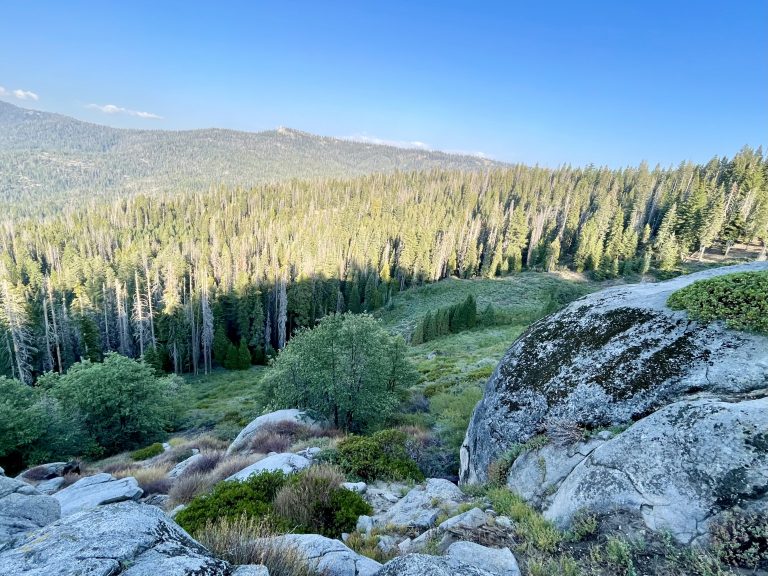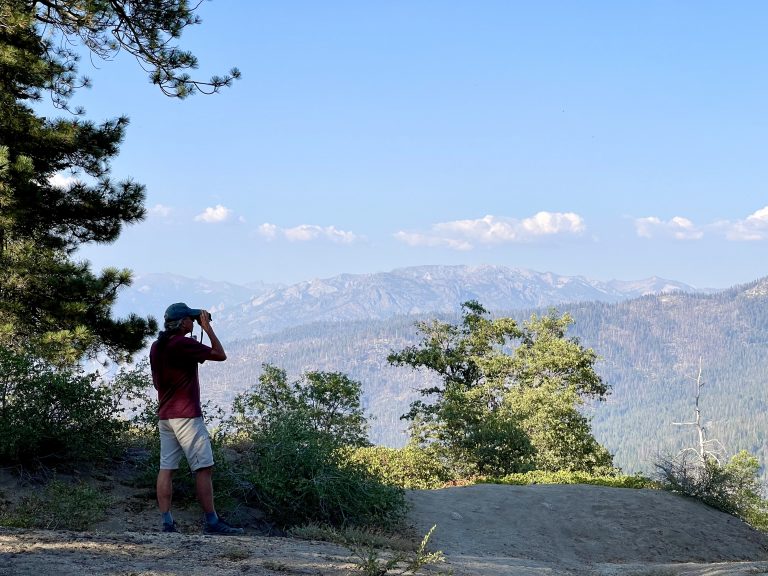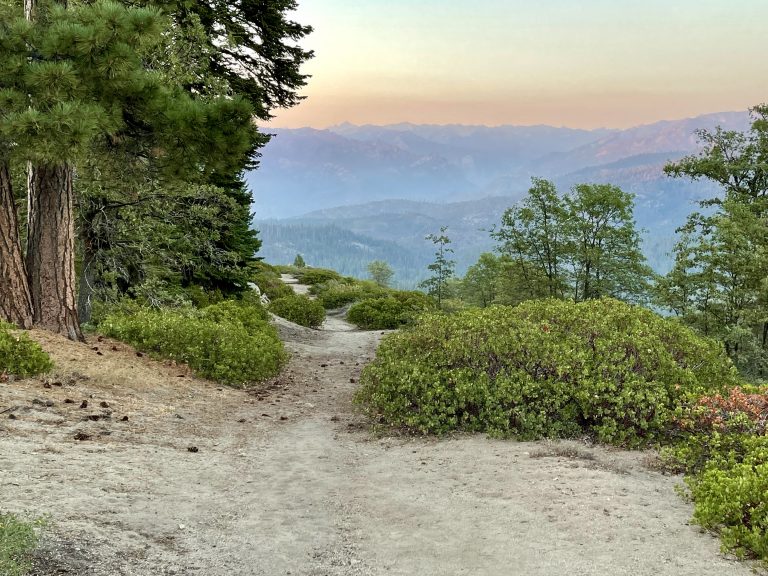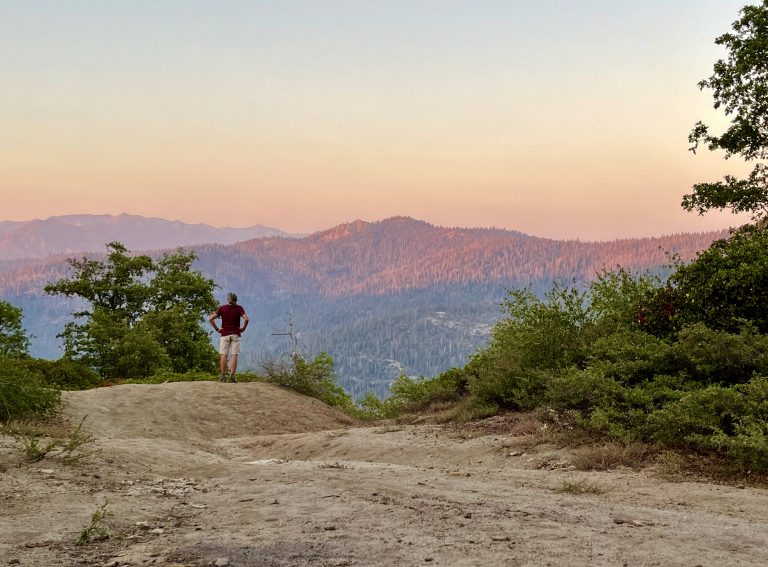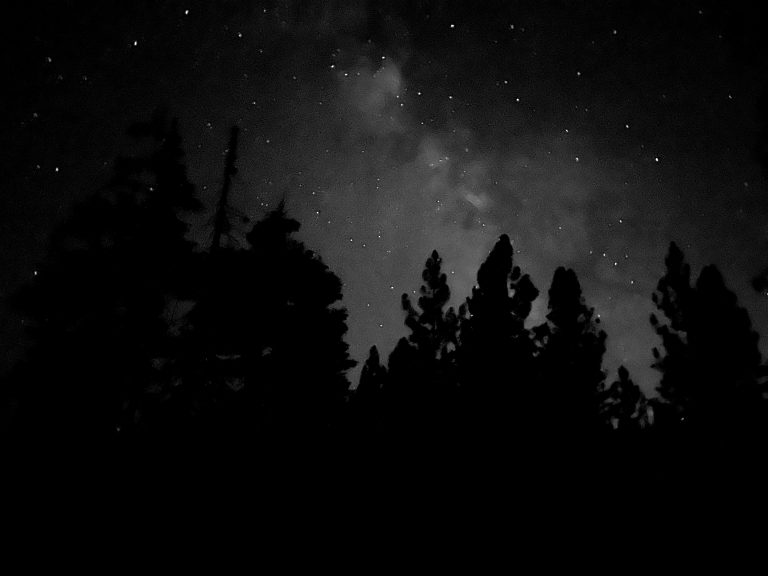August 3, 2021
We left the next morning a few minutes after waking up, the chairs and table already packed away the night before. Somewhere in the distance before we left I could hear thousands of bees buzzing and I assumed there was a large hive somewhere; we didn’t hang around to find out.
Our campsite was only about 10 minutes from the entrance to Kings Canyon National Park. We headed into the park and stopped at a picnic area to have coffee and breakfast. I tried some powdered scrambled eggs, which tasted a lot like powered scrambled eggs. Really, they weren’t too bad though I decided bringing fresh eggs with us like we usually do was a better idea.
Our goal today was a five-mile hike at the eastern end of the park. The trailhead begins at the end of the 50 miles long Kings Canyon Scenic Byway. The road climbed a few thousand feet and passed through a couple of sequoia groves before descending along an incredibly twisty paved road deep into a huge wide dry canyon (that’d be Kings, I figured).
As we went deeper into the canyon, the temperature rose and the terrain became even drier with few trees. We pulled off at one point when we saw a river far below (that’d be Kings, I figured) with lots of white water. California was in the depths of one of the worst droughts in its history and we were glad (and surprised) to see flowing water.
Eventually, the road leveled out and followed the river until the road ended at the cleverly-named Road’s End.
It was a Tuesday and we were in a very remote part of the park, but the parking lot was nearly full. We soon realized that many of the vehicles belonged to backpackers who were on multi-day treks that began nearby.
Although it was only 10:30 in the morning and we were at 5,000 feet elevation, it was already 88 degrees. Undeterred by the heat, we started out on the Kanawyer Loop Trail.
The trail follows the the south fork of the Kings River along the bottom of the glacially-carved canyon below the imposing granite walls of the surrounding peaks that rose thousands of feet overhead. Two- and three- thousand-foot cliffs and peaks towered over us, reminiscent of Yosemite.
At the halfway point, a footbridge crossed the river but before crossing we found a rocky beach where we stopped again for a snack and to soak our feet in the refreshing water along the rocky shore. I partially stripped down to rinse off most of the sweat and dust from the trail, then soaked my shirt in the chilly river before (clumsily) putting it back on.
After our break, we crossed the bridge and headed back along the other side of the river. That side though was not as close to the water and had far less shade. Soon, we were sweating in the hot sun, trudging along a sandy path. Our water was nearly gone and we still had a couple of miles to go. We plodded along the trail until finally arriving back near the parking lot where we were elated to see a spigot coming out of a waist-high boulder where cool drinking water flowed. We filled our bottles and rinsed our faces and headed back to the truck. We were surprised to see that it was 95 degrees, notwithstanding our elevation.
A few miles back down, then up the beautiful twisting road, the temperature at 99 degrees, we saw a small hand-painted sign that said Caution Ice Cream Ahead. Really? The road passed into and out of the national park, with parts of it in the national forest, but we couldn’t imagine there would be an ice cream stand anywhere near us. Sure enough, a small group of buildings hove into view, one of which had a small line of people in front of it, which we knew must be where the ice cream was. Naturally, we had to stop where the tiny stand was doing a brisk $4-a-scoop business.
Back on the road. I marveled that our three-ton truck could climb such a steep road in 100-degree heat with the air conditioner throwing ice cubes at us, without breaking a sweat. For now. At a turn-off, we saw a sign for radiator water, a throwback from decades before when such feats of automobile magic were unheard of.
Near the end of the Kings Canyon Scenic Byway, we turned onto another, smaller twisty road that surprisingly had a fair number of vehicles on it. We soon were surprised to find the road led through a small resort area and very busy Christian camp—another unusual sight in a national forest—adjacent to pretty little Hume Lake.
Past the lake, the road suddenly became much less traveled and eventually we turned off of it onto another national forest road (unexpectedly paved!) then onto a narrow single-lane dirt road.
Within a half mile we found what we were looking for. A single large campsite was at the end of the road (another Road’s End), with tall shady trees on one side and a jaw-droppingly spectacular view of Kings Canyon mountains in the distance, several peaking at nearly 14,000 feet. We’d found another perfect (and free) campsite all to ourselves, with a million-dollar view. At 7,000 feet, we knew we’d be cool overnight.
After a cultural mashup dinner of miso soup and asiago bagels we walked down a sandy path to see the sun cast long shadows on the distant mountains. Later, a refreshing coolness settled on us in our chairs. Tomorrow would be a slow easy day, before a strenuous hike the following day.
Just before 10:30, we stepped out of the truck to see the sky. The moon was not up yet and the sky was brilliant with stars. The Milky Way was as bright as we’ve ever seen.

